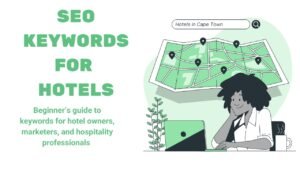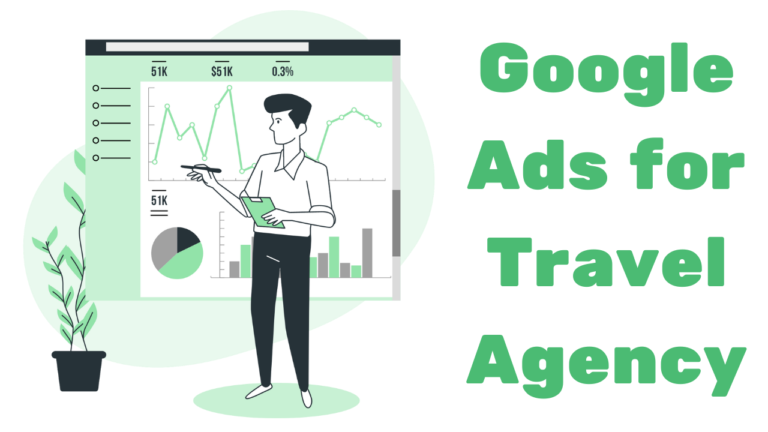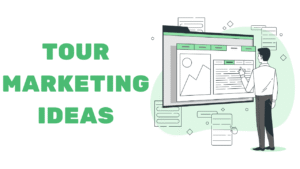

Google Ads for Travel Agency: Best Google Ads Strategy for You
So, you’re a travel agency. You know all there is to know about destination vacations and creating the perfect packages for your customers. However, you aren’t getting much traffic, and as a result, you are only getting a few bookings.
This is despite your best efforts to do SEO for travel agencies, which does bring success, but it’s hard to beat more established agencies organically. That is where Google Ads, formerly Google Adwords, comes in.
Google Ads is a powerful advertising platform that can help travel agencies reach new customers. It’s a form of paid advertising using Google, which has access to billions of users, as well as websites on its partner networks. (Xanax)
In this blog post, we’ll answer “how does Google Ads work?” as well as how you can create an effective Google Ads campaign for your travel agency.
The Benefits of Google Ads for Travel Agencies
Travel agencies have a lot to gain from creating travel ads using Google Ads. This includes the following:
Reach a Wide Variety of People
When planning a trip, most people turn to the internet for help. As the world’s largest search engine, Google gets a lot of traffic from people looking for travel information. In fact, there are at least 9 billion searches on the search giant.
So, tourism ads with Google can help you appear in front of billions of people every day.
Furthermore, your ads won’t be limited to just Google. In addition to showing up on the Google Search Network for text ads, your visual ads can show up on the Google Display Network. This includes both services owned by Google, as well as mobile apps and other partner websites.
Get Targeted Traffic
With Google Ads, you can reach a specific target audience who are searching for travel-related keywords on Google. You can also use location targeting to zero in further on these people.
For example, you can target people in specific locations or who speak specific languages. Additionally, you can use negative keywords to ensure that your ads are not being shown to people who are not interested in what you have to offer.
By using Google Ads, you can reach a large audience of potential customers and significantly increase the targeted traffic coming to your website.
Control Your Costs
One of the better benefits of Google Ads is that there are no limits to how much you pay for the ads. You can spend as much or as little as you want daily, weekly, or monthly.
Best of all, you will only pay when someone clicks on your ad, which can be great for increasing brand awareness via display campaigns.
Instant Results
Unlike other forms of travel content marketing, paid Google advertising for tourism can deliver instant results. You can create and publish well-optimised ads and start getting traffic and conversions the very same day.
Google Adwords Advertising Networks
Before devising a strategy or creating Google Ads campaigns for your travel agency, you must choose where you want to place your ads.
Ideally, you want to place your ads on both the search and display network. But, this is not possible for everyone, mostly due to budget constraints.
Here’s what differentiates the two Google Ads networks, as well as how they can work together.
Google Search Network
As the world’s leading search engine, Google handles billions of searches per day. But, the search giant’s reach isn’t limited to just Google searches; they also have the Google Search Network. It’s what handles travel search engine marketing from a paid ads perspective.
The Google Search Network consists of a network of websites that are search partners with Google, enabling them to show ads. When someone uses one of these websites to search for something, they might see an ad from a business that is relevant to their query.
For travel agencies, the Search Network can be an effective way to reach potential customers who are actively looking for your services. And because the Search Network includes such a wide range of websites, businesses can reach a large audience with their ads.
Search ads are perfect for capturing potential customers nearing the end of the sales funnel as they’re actively looking for an agency like yours. However, they do tend to be the more expensive of the two.
Google Display Network
The Google Display Network is a huge network of websites that showcase both visual and textual ads. This includes major news sites, popular blogs, and smaller niche sites. When you create a text and image ad on Google, you have the option to target the Display Network.
This means your ad will appear on any of the millions of websites in the network that are relevant to your business. For example, as a travel agency, your ad might appear on a travel blog. The Display Network is a great way to reach a large audience and generate brand awareness for your business.
Display ads are great for brand awareness, and they can also visualise your packages. And since images can instantly catch someone’s attention, they’re particularly powerful for travel agencies. Furthermore, they’re generally cheaper than search ads and are adaptive to whichever platform they appear on.
Search ads are perfect for lead generation for travel agents, as you’ll reach people who’re ready to convert. If the goal of your travel agency ad is to boost your visibility, display ads are perfect. But you can create separate campaigns in each format to get the most out of your ads.
Creating a Google Ads Campaign
So, now that you’ve set up your Google Ads account and know about the types of Google Ads networks, it’s time to start creating your ad. Here are the steps to follow when creating an ad for both search and display advertisements.
Do Research
The first part of doing any travel agency advertisement is to ensure you understand your audience. If you’ve been in business for a while, this information should already exist.
If not, you can create personas for the different segments you want to target. You can target these people based on demographics, their interests, and whether they’re in-market (actively researching travel information) or not.
You’ll also need to do keyword research at this point to figure out what keywords you would like your ads to be triggered by. Just like they’re an important ranking factor for SEO, they’re also crucial for Google Ads. A good rule of thumb is to cast a wide net at first, then narrow down your keywords by keeping those that show a positive trend and discarding the ones that are now promising.
Both target audience and keyword research should help dictate what your copy should be like.
Next up, choose the location you’ll be targeting, and you can use Google Trends to find potential traffic in different locations for your destination packages. You also have the choice of using paid tools like Ahrefs.
Create Destination-Specific Landing Pages
Everyone knows Google Ads are great at getting your travel agency in front of potential customers. But, if you’re not using landing pages, you’re not getting the most out of your campaign.
Landing pages are single web pages that are designed specifically for a given campaign or offer. They typically have a unique URL that’s different from your website’s home page. And they’re often optimised for conversion by featuring compelling headlines, clear calls to action (CTA), and focused content.
Focused on a specific goal, landing pages are more effective than your website’s home page at converting visitors into leads or customers. Plus, they help with the ad score (more on this later).
Set Your Budget
Afterwards, you’ll need to set your budget, i.e. the maximum you’re willing to spend on the ads. At the start, it’s difficult to set a budget as you have no figures to go off, even if your keyword bidding prices can help. So, you’ll need to just throw a decent amount of money into the ads and then adjust for performance.
A good beginning monthly budget is $850 per month, and you can then go higher or lower as you wish or as the data dictates. Keep in mind that display ads are generally cheaper than search ads.
Choose Your Campaign Objective
Google Ads has several campaign objectives, but travel agencies really need to choose one of three. This includes leads, website traffic, and brand awareness and reach.
Leads are perfect for lead generation as they are shown to searchers that are most likely to convert. Website traffic will bring you qualified visitors based on the keywords you’re bidding on, and brand awareness and reach will put the word out there that you exist.
Choose a Campaign Type
Likewise, you’ll find several campaign types you can run. However, you should first start with either/or both search and display campaigns for the reasons explained above.
Further down the line, you can try using video ads to showcase your travel agency’s capabilities on Youtube.
Pick a Bid Strategy
As Google Ads are an auction, everything is done through bidding. So, you’ll need to pick a bid strategy that best fits your plans.
You can choose between maximising clicks, maximising conversions, maximising impressions, or setting a target conversion value. After getting a good number of conversions, you’ll be able to pick more bid strategies like return on ad spend, target cost per action, and the like.
This is also where the keywords for travel and tourism you found earlier come in. As you slot in your preferred keywords, Google will show an estimate of what you can expect to spend.
Ad Copy or Visuals
Text ads give you a chance to share unique information through headlines and descriptions. Headlines should grab the searcher’s attention, and descriptions should add valuable information that entices the reader to click.
For display advertising, you’ll need to create attention-grabbing images for visually captivating ads — which shouldn’t be too difficult for a travel agency with a gallery of destinations. You can also use text to give context to each image.
Try to make these as distinct as possible, focusing on what makes your company unique — there are already dozens of travel agencies advertising what you offer at the basic level.
Optimising Your Campaign
Tracking the results of your efforts is crucial for a successful, continuous Google Ads experience. The best way to do this with Google Ads is by looking at the ad quality score, which can give you suggestions for what to improve.
Firstly, you can adjust your keywords by adding new keywords and adding negative keywords to not appear on irrelevant searches.
Secondly, observe your Google Analytics data to see how long people spend on your landing pages before abandoning the page. A long time spent on landing pages without converting may point to the booking process being too long and needing some steps removed.
More Tips for Doing Google Ads for Travel Agencies
In addition to the above, there are a few more things you’ll need to consider doing to ensure you have the best travel ads possible. Those include the following tips:
Adjust Your Ads for Seasonality Changes
Seasonal changes can have a big impact on your business, and that includes your Google Ads. As the seasons change, so do consumer habits, and that means you need to adjust your Google Ads accordingly.
For your paid search campaign, take a look at your keywords and make sure they’re still relevant. Next, take a look at your search ads’ copy and make sure it’s still accurate. For display ad campaigns, you’ll want to rotate images if activities change drastically with the weather in certain destinations.
Finally, keep an eye on your budget to ensure you don’t overspend with seasonal changes.
By making these simple adjustments, you can make sure your Google Ads are always in step with the seasons.
Social Proof Your Landing Pages
As a travel agency, you’re likely asking people to trust you with thousands of dollars. So, a large number of people would be understandably apprehensive about using your services if they have nothing to back up that you do your job well.
That’s why having customer testimonials and reviews on your landing page is crucial, as they’re valuable trust signals. Furthermore, you can insert logos of major companies that have worked with and endorsed your agency.
Don’t Forget About Bing
Sure, Google is a search giant with no equal, but there are still some search engines out there worth advertising on too. There are no better alternatives than Bing, which is the second biggest search engine in the world.
The process of advertising on Bing is similar to Google, and you won’t be throwing money away, either. After all, Bing gets over a billion searches monthly and given that people rarely flip-flop between the two, that’s one billion searches you could use to grow profits.
Travel Tractions Can Help You Create Travel Agency Ads with Google
If you’re a travel agency, there’s no reason not to be using Google Ads. Not only does it give you a chance to get your travel agency in front of billions of potential customers, but it also allows you to laser target your audience so that you’re only paying for ads that are being seen by people who are interested in what you have to offer.
Creating Google Ads campaigns may seem daunting, but we can help. Our team of experts will work with you to create a campaign that gets results.
So what are you waiting for? Get started on your Google Ads journey or get in touch with us today and let us help you.












